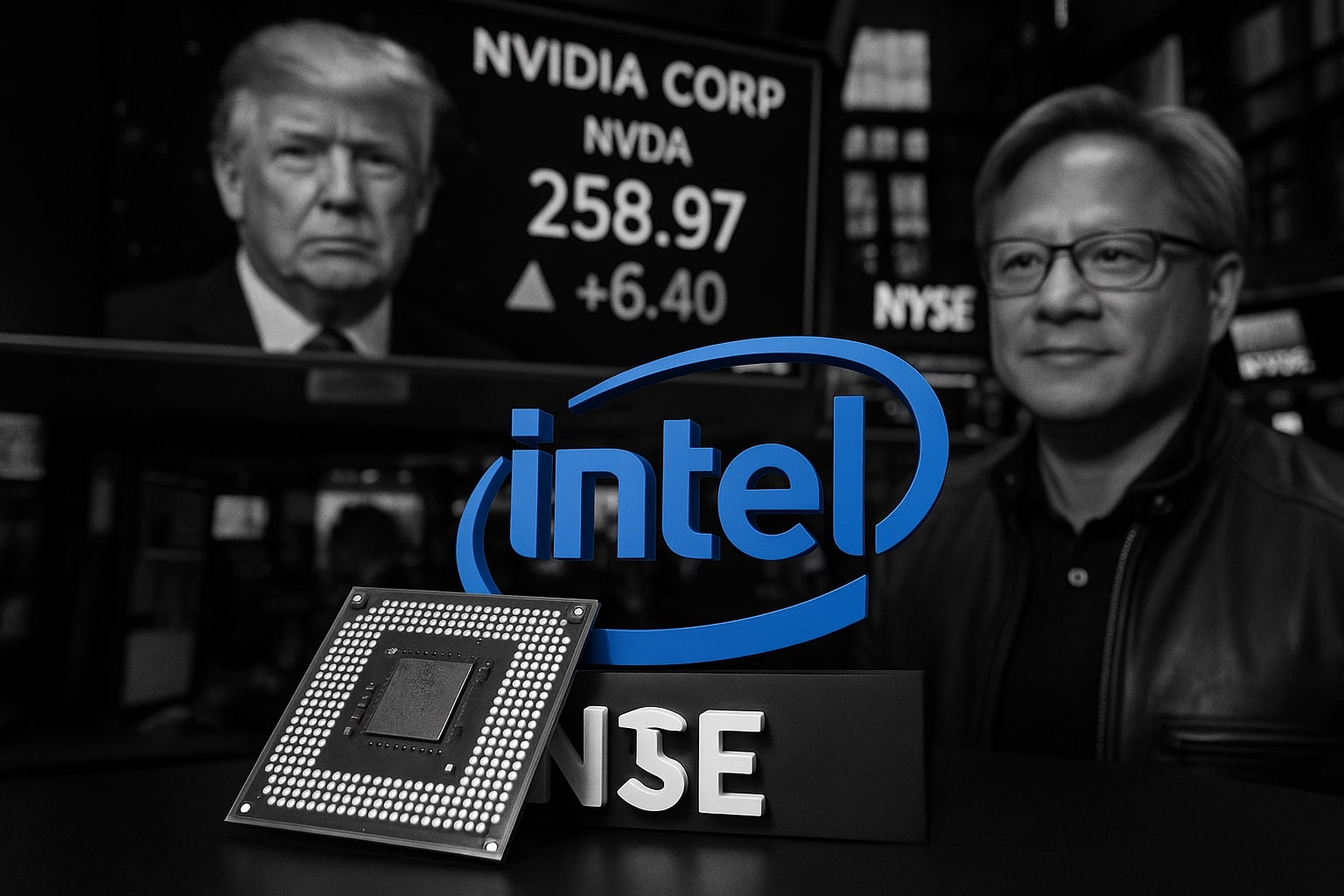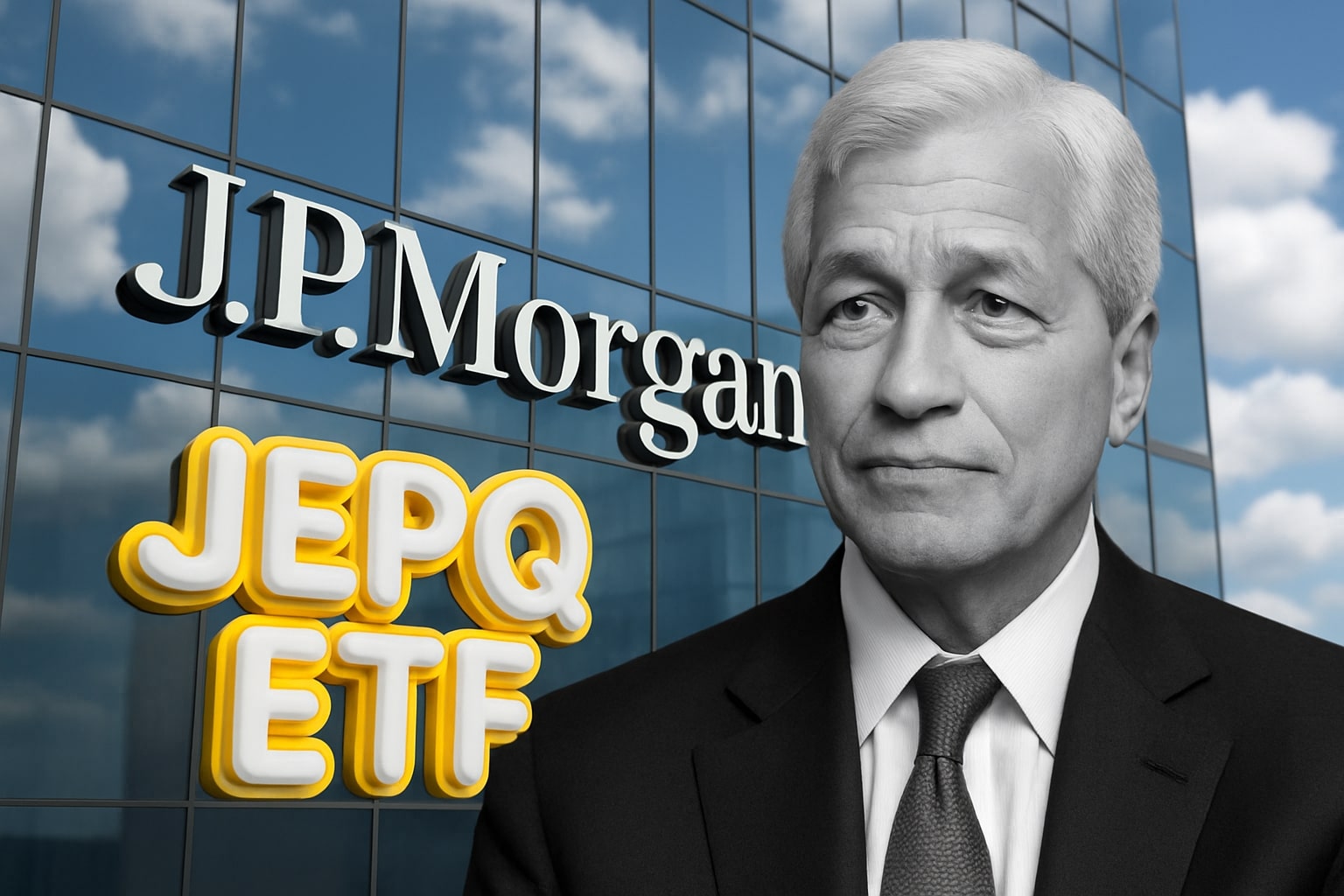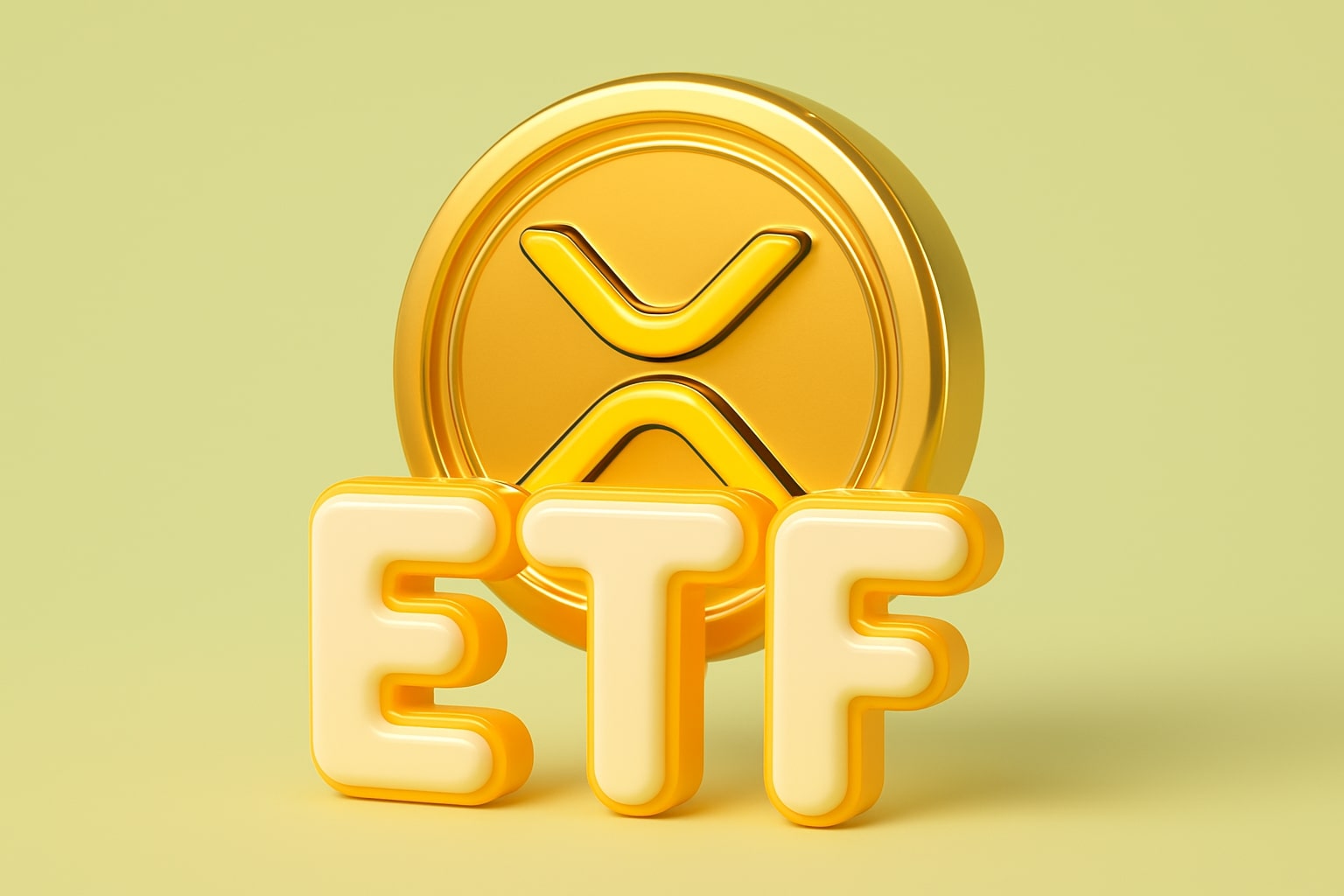
Intel Stock Price Forecast - INTC Shares Drops to $36.37 After 3.78% Selloff
Intel’s 81% YTD rally cools as the chipmaker battles –$20.5B losses, negative free cash flow of –$8.3B, and a stretched 56.5x forward P/E | That's TradingNEWS
Intel Corporation (NASDAQ: INTC) — Momentum Built on Policy Hype, Foundry Ambition, and Fragile Profitability
Stock Overview: Volatility Surges as NASDAQ: INTC Tests Its Ceiling
Intel Corporation (NASDAQ: INTC) has entered a defining stretch in its turnaround story, oscillating between investor optimism over U.S. manufacturing policy and the brutal reality of weak earnings power. The stock ended the week at $36.37, down 3.78%, and slipped further after-hours to $35.67, reflecting persistent profit-taking after touching a 52-week high of $39.65 earlier in the session. Intel’s shares have now ranged between $17.67 and $39.65 over the past year, effectively doubling from their 2023 lows and outperforming the S&P 500’s 13% annual gain with an 81.4% year-to-date surge. Trading volume has exploded to 176.6 million shares, far above the 121.4 million three-month average, signaling both retail enthusiasm and institutional rotation into semiconductor names ahead of critical trade and policy events.
The company’s market capitalization now stands at $173 billion, with traders closely watching the stock’s support near $34.80 and resistance around $39.70. For live pricing updates, see NASDAQ: INTC real-time chart.
From Policy Darling to Political Risk — The Tariff Wildcard and Domestic Manufacturing Advantage
Intel’s explosive re-rating has been driven as much by politics as by performance. President Donald Trump’s proposed 100% tariffs on Chinese imports, alongside plans to penalize chipmakers that rely more heavily on overseas fabs, have transformed Intel into a perceived domestic champion. The rumored “1:1 manufacturing ratio” policy—forcing firms to produce at least half their chips in the U.S.—would instantly tilt the playing field in Intel’s favor over competitors like TSMC and Samsung, whose supply chains remain deeply anchored in Asia.
At the same time, Washington is reportedly preparing an aggressive industrial subsidy framework, potentially involving $3–5 billion in new federal capital injections and up to a 10% U.S. equity stake in domestic semiconductor manufacturers. Intel stands as the most likely beneficiary, already running multi-billion-dollar expansion projects in Arizona, Ohio, and Oregon, all positioned to qualify for strategic funding.
However, the same policy shift that lifted sentiment now represents a double-edged sword. Beijing’s retaliatory tariff warnings—reportedly as high as 34% on U.S. goods—could complicate Intel’s customer base and materials flow, given that nearly 27% of Intel’s revenue is indirectly tied to Chinese demand through OEM channels and supply partners.
Corporate Partnerships: The Ambitious Web Behind NASDAQ: INTC’s Re-Rating
Intel’s resurgence in market narrative owes much to its partnerships, both real and rumored. The company’s expanding collaboration network has become a central pillar of investor excitement:
The NVIDIA (NASDAQ: NVDA) and SoftBank alliances—rumored to inject $7 billion combined—position Intel as both a strategic manufacturing partner and a future player in the AI infrastructure race. Sources indicate that NVIDIA’s $5 billion stake could fund foundry capacity tailored for AI accelerators, while SoftBank’s $2 billion investment aims to align chip supply with its ARM-based ecosystem.
Equally significant is the reported TSMC (NYSE: TSM) dialogue, suggesting a potential 20% joint venture stake that would integrate TSMC’s process leadership with Intel’s foundry scale in the United States. While the deal remains speculative, even the discussion underscores Intel’s transformation from a lagging CPU designer to a politically indispensable manufacturing partner in the global chip hierarchy.
Financial Reality: Losses Mount Beneath the Hype
Behind the geopolitical buzz lies a company still wrestling with the fallout of years of underperformance. For the trailing twelve months, Intel posted revenue of $53.07 billion, nearly flat year-on-year, but with profitability deep in the red. Net losses totaled $20.5 billion, translating to GAAP EPS of –$4.77 and a profit margin of –38.6%.
Operating margin remains negative at –3.8%, with return on equity at –18.6% and return on assets at –0.85%, all showing the financial scars of its costly pivot toward foundry services. Intel’s EBITDA stands at $9.2 billion, but its EV/EBITDA ratio of 186x underscores the valuation distortion created by weak earnings and heavy capital intensity.
Quarterly results tell a similar story: Q2 FY2025 revenue came in at $12.86 billion, down 1% year-over-year, while earnings of –$0.10 per share fell below consensus expectations of +$0.01, continuing a volatile pattern of alternating huge beats and misses over recent quarters.
Balance Sheet Health and Cash Flow Stress
Intel’s balance sheet offers resilience but not abundance. The company holds $21.21 billion in cash and equivalents against $50.76 billion in debt, resulting in a debt-to-equity ratio of 48%. Liquidity metrics—current ratio 1.24 and quick ratio 0.92—reflect tight but manageable conditions.
Where investors grow cautious is cash flow: operating cash flow sits at $10.08 billion, yet levered free cash flow remains deeply negative at –$8.32 billion, emphasizing how capital expenditure on fabs and foundry expansion is outpacing operational earnings. With a price-to-sales ratio of 3.04x and price-to-book of 1.81x, the stock’s valuation depends entirely on whether Intel can flip back to sustainable positive free cash flow in 2026.
Earnings Expectations: The Market’s Patience Clock Is Ticking
Wall Street forecasts project FY2025 EPS at $0.12 and FY2026 EPS at $0.63, implying a nearly sixfold profit recovery over twelve months. Yet these projections rest on execution that Intel has historically struggled to deliver.
Forward P/E now stands at 56.5x, detached from its own historical multiple near 15–20x. Analysts’ price targets range widely—from $14 on the low end to $43 at the high—yielding an average of $26.37, about 27% below current levels.
The next earnings release, expected on October 23, 2025, will test that optimism. Margin recovery in data center and AI segments, along with early revenue contribution from the 18A process, will determine whether Intel’s turnaround is sustainable or simply speculative enthusiasm.
Institutional Sentiment and Insider Trends in NASDAQ: INTC
Institutional ownership in Intel currently stands at 65.2%, reflecting robust long-only participation, while insider ownership is minimal at 0.08%. Short interest remains modest at 2.56% of float (121.8 million shares), indicating neither excessive pessimism nor short-squeeze risk.
Notably, one large U.K. asset manager increased its Intel stake by 8.4% in Q2 2025, now holding 4.03 million shares valued at approximately $91 million, a signal of accumulating conviction among long-term funds betting on U.S. semiconductor policy.
For detailed insider movement, review Intel insider transactions and full ownership structure via Intel stock profile.
Competitive Landscape: The War for Market Share and AI Dominance
Intel’s core business continues to face aggressive competition across its major verticals. In the CPU market, it maintains roughly 75% global server unit share, though Advanced Micro Devices (NASDAQ: AMD) continues to expand in hyperscale data centers. In AI infrastructure, Intel’s Gaudi accelerator series lags far behind NVIDIA’s H100 and H200, but new collaborations could narrow that gap by 2026.
Intel’s Core Ultra 3 series marks a critical test of whether it can reclaim consumer PC relevance, while the 18A process node—central to its foundry strategy—must prove commercial yield viability before customers such as Amazon, Microsoft, or the U.S. Department of Defense commit to large-scale wafer orders.
Read More
-
JEPQ ETF Holds $58.82 as Fund Flows Cool and Nasdaq Valuations Stretch
06.12.2025 · TradingNEWS ArchiveStocks
-
XRP ETFs Cross $1 Billion AUM as XRPI and XRPR Lead Institutional Wave
06.12.2025 · TradingNEWS ArchiveCrypto
-
Natural Gas Price Breakout: NG=F Soars to $5.50 on Cold U.S. Weather & LNG Export Boom
06.12.2025 · TradingNEWS ArchiveCommodities
-
USD/JPY Price Forecast - Dollar to yen Slides to 155.60, BOJ Hike Reprice Global Currency Markets
06.12.2025 · TradingNEWS ArchiveForex
Valuation Crossfire: Growth Story Priced Before Earnings Arrive
The current valuation encapsulates both the dream and the danger. Intel’s enterprise value-to-revenue ratio of 3.9x and forward earnings multiple above 50x are more aligned with growth-phase AI companies than with a legacy chipmaker.
The market is effectively pricing in a flawless turnaround, counting on Washington subsidies, strong foundry adoption, and global reshoring tailwinds. Yet, the income statement tells a harsher truth—Intel remains loss-making, cash-flow negative, and dependent on policy favor.
Technical Setup: Volatility Meets Resistance
From a chart perspective, Intel trades in a consolidation phase between $35.00 and $39.65, with resistance building around its recent peak and support emerging near $33.00–$34.00, where high-volume buying interest reappears. Should sentiment deteriorate post-earnings or if policy news disappoints, downside retracement toward $30.00–$32.00 appears likely. Conversely, a breakout above $40.00 would require strong confirmation of revenue traction and margin recovery—conditions not yet visible in the current data.
Final Outlook and Rating on NASDAQ: INTC
Intel’s current valuation stands on a foundation of policy-driven optimism, not financial strength. The numbers show a company still deep in restructuring: negative margins, shrinking free cash flow, and uncertain yield ramp for its next-generation fabs. While U.S. subsidies, tariffs, and partnerships with tech giants may protect its relevance, they cannot substitute for profitability.
Verdict: SELL — NASDAQ: INTC remains overvalued at $36–37 given forward P/E of 56.5x, –$8.3B free cash flow, and speculative earnings recovery. Re-entry zone: $30–32, where risk adjusts to tangible performance.
Intel’s future hinges on execution, not expectation. Until 18A wafers translate into profit, policy headlines will drive the stock—but fundamentals will decide its fate.


















